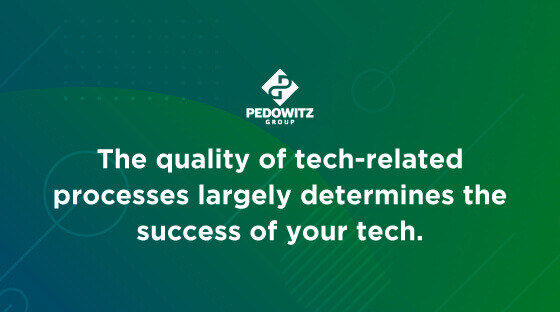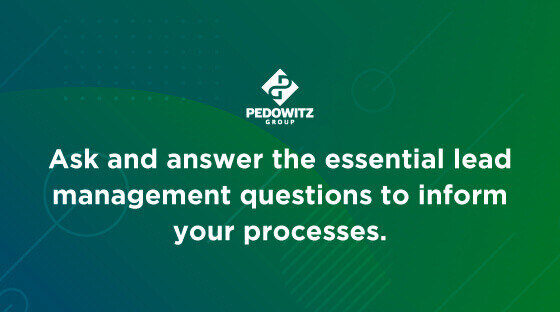Everyone likes to offer suggestions on optimizing your martech stack.
Given the ever-increasing thousands of options that claim to answer your marketing challenges, is it realistic to think that any one article will know the exact configuration of tools that are ideal for your organization’s personnel, budget, and customer base?
Of course not.
Any effective guide will suggest that you begin with an assessment or audit of what you have on hand, then maybe consult an expert or two. Honestly, I wouldn’t be too upset if you stopped right at one of those two steps in terms of your journey to a stronger tech stack.
It is worth noting, however, there’s another facet to making your martech stack optimal that a lot of organizations overlook, and it may be one of the most important to consider…
Pillars of Support
Let’s back up a sec and make sure we’re operating from a common frame of reference. When it comes to the architecture of your martech apparatus, what are the distinct areas that must work in concert with each other? I think you’d get most CMOs and the leaders working below them to cite the technology and relevant data off the top of their heads.
If you gave them another few seconds, they might snap their fingers and exclaim “Oh, yeah...can’t forget about the people/personnel!”. All three of those are quite relevant, indeed.
There’s a fourth pillar, if you will, that matters just as much if not more than the other three: Process.

It’s so obvious, in fact, that marketing leaders often overlook it as a source of immense potential when it comes to transforming and optimizing your tech stack. The fact is, however, the quality of processes that surround the other three “pillars” largely determines their success.
Again, there’s no magic bullet prescription for processes that work across every organization. There are, however, a ton of best practices to help inform your approach. It simply depends on which “typical” martech stack-related objectives you’re specifically trying to achieve. Once you have clarity on what those are, you are ready to act upon the best practices we’ll cover in this article.
Take the Lead
We’ve already defined data as a critical pillar of this process. Organizations – even those relatively in the same tier of impact and revenue – have wildly varying levels of maturity when it comes to truly analyzing their customer data in real-time and letting it inform a customer-centric outlook.
There’s little data of more importance to sales and marketing organizations, however, than leads. Lead generation, as a concept, may not be as popular (or effective) as it once was thought to be, but lead management and how it integrates with your CRM is critical to the success of your sales and marketing teams’ efforts to drive revenue.

We’ve done a super in-depth dive on successful lead management, and you should definitely read it from top to bottom. But before you do that, be sure that you’ve asked and answered essential lead management questions lately such as:
- Have you defined your lead sources and thresholds?
- Are you revising these definitions as market headwinds dictate?
- What level of activity qualifies as a lead?
Knowing where your leads come from, how you categorize them, and how you want to handle your data should inform what lead management tools and processes you use….not the other way around. Even if you have tools already in place, it’s not too late to consider if they’re serving you best in this capacity.
This extends to CRM integration as well. Odds are you already have a host of complimentary intent data, chatbot, and data enrichment solutions meant to flow together seamlessly with your CRM. The reality is that the integration of these are negatively impacted by messy, inefficient processes.
That, in turn, impacts the potency of your ABX, ROI on your tech stack, and overall pipeline.
Think of it this way: Highly-regarded homes are always described as “well-built”. The tools the builder used to construct it aren’t described at all.
Take the time to get these processes right.
The Customer is Always….
…Evolving! Thus, having a tech stack that automates and manages your relationship is must-have.
Whether it’s customer data management (CDM), customer relationship management (CRM), customer intelligence platforms (CIP), or a customer experience platform (CXP) that encompasses them all and more, there are no shortage of tools to shape the way you engage customers.
The tools, however, are just one part of the puzzle. Your customer engagement process must be defined not just by your strategy, but also your resources available to support said strategy.
You’re going to have access to a considerable amount of customer data, but can your customers trust you to use it safely and responsibly? A customer-centric approach would ensure that your data is primarily used for personalization. This would allow you to drive repeat business, brand loyalty/advocacy, and provide relevant market research with a ton of value.
What does that look like, however, in terms of a strategy? Again, we have to remember to ask the right questions as early as possible:
- Is your sales team reliant on automation and AI insights, or are they motivated by personal relationships and institutional knowledge?
- Do you have the right personnel to conduct proper data analysis and glean actionable insights?
- And now for the $1 million question: How mature is your organization when it comes to ABX (account-based experience)?
All About ABX
The point is, there are a rather large number of vendors who would like to help your company improve its account data, identify unknown prospects, predict intent to buy, automate targeted advertising, and more – even if you think you’re already supporting ABX/ABM.

The best process for most organizations is to opt for the phased approach. Start by intentionally building out your ICPs (ideal customer profiles) and updating the buying center personas within those ICPs. That informs the customer journey, and it allows you to craft touchpoints and content for each step of that journey.
This prepares you to work in more advanced ABX concepts like predictive analytics, attribution tools, and advertising automation software. You may already have some of these tools, but think about how integrated they are (or aren’t). Consider that your sales and marketing teams are using them completely differently as well, and you’ll need to align these groups to get max value from the tech stack already in use.
Putting it all Together
When it comes to marketing, it's important to define your processes and make sure that you are using the most effective tools for gathering lead data and managing lead generation. This means employing a variety of techniques like lead management software, data collection tools, and automated lead scoring to make sure you are delivering relevant, high-quality leads to your sales team.
In addition, incorporating strategies like account-based marketing can help you reach the right decision-makers more quickly so that your leads don't get lost in the shuffle or get turned off by irrelevant messaging. By taking the time to carefully assess your marketing processes and utilizing the best tools available, you can ensure that your lead generation efforts are both effective and efficient.
To start, it's important to assess your marketing goals.
- What do you want to achieve with your marketing tactics?
- Is improved brand recognition or more website traffic more important?
- Do you need help attracting new customers or retaining existing ones?
The right marketing tools will be based on these goals and what stage you're at in your marketing journey.
Next, think about which integrations are essential to support your marketing efforts. Do you work with other businesses that would benefit from one centralized system? Considering all possible integrations will help ensure that any technology platform you select provides the support you need.
Ultimately, this planning informs your processes, and it makes or breaks your tech stack implementation.
Of course, if that still seems overwhelming for your organization… our tech stack services are one of our most popular for a reason. We're happy to chat and help you get this right!



